|
HOME: www.hiltonpond.org |
|||
THIS WEEK at HILTON POND (Back to Preceding Week; on to Next Week) |
TEN COMMON HUMMINGBIRD QUESTIONS--AND ANSWERS Although we're interested in all aspects of nature at Hilton Pond Center, a lot of the work we do involves birds--especially Ruby-throated Hummingbirds. As a result, each year we get hundreds of inquiries about hummers from curious students and adults via e-mail, phone, and during our presentations and workshops related to Operation RubyThroat: The Hummingbird Project, This year we've gotten even more questions than usual, so we decided to devote our current installment of "This Week at Hilton Pond" to some of the more common queries. Below, in no particular order, is a batch of ten frequently asked questions. (NOTE: Our responses, in most cases, relate to Ruby-throated Hummingbirds, Archilochus colubris--the only species that BREEDS in the eastern U.S. and in most of southern Canada. Some comments may also be applicable to the 15 or so other kinds of hummers that occur in the U.S.--including those that occasionally wander eastward into the ruby-throat's realm.) All maps, charts, text & photos © Hilton Pond Center
All maps, charts, text & photos © Hilton Pond Center 1. I have two kinds of hummingbirds at my feeder, the rubies and the ones that are green. What kind are they? Again, the only hummingbird that breeds in the eastern U.S. and in most of southern Canada is the Ruby-throated Hummingbird (RTHU), so named because of the bright red gorget of the adult male (above left). This is the species we band here at Hilton Pond Center. In ruby-throats, however, the female (above right) has a white throat--as do some immature RTHU males (see photo below). ALL ruby-throats have green backs--even the males--but adult males also have greenish flanks and appear darker than females or young males. (NOTE: The Ruby-throated Hummingbird may be the only hummer breeding in the eastern U.S., but it's not the only one that breeds east of the Rockies. Central and West Texas are home to nesting populations of Black-Chinned Hummingbirds, Archilochus alexandri, a RTHU congener that nests in most of the western states, northern Mexico, and southern British Columbia where ruby-throats do not. Black-chins occasionally show up in the eastern U.S., mostly as winter vagrants.) All maps, charts, text & photos © Hilton Pond Center
All maps, charts, text & photos © Hilton Pond Center 2. I have a "little black hummingbird" at my feeder. What kind is it? There are no fully black hummingbirds. Undoubtedly what you're seeing is an adult male Ruby-throated Hummingbird (ventral view, above). Apparent color in hummers doesn't come from pigment--as in the red of Northern Cardinals or the yellow of an American Goldfinch--but from feather structure. Tiny grooves and air bubbles in a hummingbird's feathers absorb and scatter light in various ways such that the human eye sees red or green.
In poor light or from the wrong angle the hummer--especially red-gorgeted adult males that have relatively little white plumage--may appear almost black rather than red or green. The photo above shows how by merely changing his body angle a male can completely alter the appearance of his gorget. (NOTE: We should mention that male RTHU are up to 20% smaller than females; what appears to be a "big" hummer at your feeder is probably a female.) All maps, charts, text & photos © Hilton Pond Center
All maps, charts, text & photos © Hilton Pond Center 3. Why are all my hummingbirds females? As noted above, young male Ruby-throated Hummingbirds resemble females with ONLY the adult males having full red gorgets. (To repeat, young males may have nearly white throats, of they may show dark black or green throat streaking and/or one or more red throat feathers, as above.) Thus, by mid-summer, "white-throated" RTHU could be adult females, immature females, OR immature males. (At most locales, adult male ruby-throats come back first in spring, so early on that particular age/sex will be most plentiful; by mid-spring there usually are more adult females than adult males.) Interestingly, during our 28 years of banding here at Hilton Pond Center immature RTHU males outnumber immature females by about 3:2, which means an awful lot of our "white-throated" birds probably aren't females at all. All maps, charts, text & photos © Hilton Pond Center
All maps, charts, text & photos © Hilton Pond Center 4. There's a "baby hummingbird" feeding on my backyard flowers. What kind is it? First of all, baby hummingbirds can't fly. Baby songbirds such as American Robins that are poor flyers and have short tails when they fledge prematurely are still tended by parents, but hummingbirds need to be fully grown when they leave the nest (or immediate nest vicinity). What appears to be a baby hummingbird nectaring in your garden is likely one of the hummingbird moths (two photos above)--an intriguing group of lepidopterans that are very good hummer mimics. A typical hummingbird moth is diurnal, has mostly transparent wings, can hover, and uncoils a black proboscis that looks just like a hummer's long bill; some hummingbird moths even have abdominal appendages that resemble a hummer's tail. (NOTE: Various species of "hummingbird moths" can be found elsewhere in the world, hence the mistaken belief that hummingbirds naturally occur other than in the Western Hemisphere.) All maps, charts, text & photos © Hilton Pond Center
All maps, charts, text & photos © Hilton Pond Center 5.What's the best kind of feeder for my hummingbirds? Our tongue-in-cheek advice about hummingbird feeders is the same as what we suggest about picking a spouse or significant other: "Choose one that is inexpensive and easy to keep clean." The worst hummer feeders are those expensive blown-glass creations with rubber stoppers that--although attractive to the human eye--break easily, leak frequently, and have nooks and crannies inaccessible to cleaning brushes. That leaves two main types of advisable feeders: Those with a WIDE-MOUTH bottle reservoir, and the flat saucer types (both shown in the photo above); choosing between these two is largely a matter of personal preference. The bottle types usually hold more liquid, while the saucer types provide a better view of perching birds--although we've observed it's hard for many hummers to reach the sugar solution after a flat feeder is only half empty. (And speaking of feeders with perches, we like 'em so we can watch the birds longer.) Most saucer feeders are easy to clean; the best bottle types have bottoms that disassemble for this purpose. (In case you're wondering, the wide-moth bottle feeders are what we prefer at Hilton Pond Center.) Avoid feeders with loose parts that can break or get lost, and don't use types with tiny round holes that may damage a hummingbird's bill if the hummer has to pull out quickly; oval or oblong feeding ports seem to be the best bet. Don't forget to scrub all portholes with a pipe cleaner or a small brush made for that purpose. (NOTE: We suggest you not maintain just a single feeder. Hang at least three, with one situated out of sight of the others so a dominant territorial hummingbird has trouble defending them all. Remember that many smaller feeders are usually more effective than just a few big ones. We suggest folks try several different feeder styles to learn what their local hummers like most.) All maps, charts, text & photos © Hilton Pond Center
6.What should I put in my feeders, and what about red food coloring? The correct formula is simple and ascribed to by virtually all hummingbird experts: Four parts tap water and one part regular cane sugar. (This means NOT brown or organic or granulated sugar, not artificial sweetener, and especially not honey or Kool-aid or Cheerwine. Also do NOT use "turbinado," a refined sugar sold in Latin America and U.S. health food stores; this product contains large concentrations of iron that can be toxic to hummingbirds.) A 4:1 ratio is roughly a 20% sugar solution, which is pretty close to the average concentration of natural sugars in flower nectar. (You can even drop back to 5:1 in summer when hummers may need water more than sugar; on the other hand, if you happen to host a winter hummingbird you might consider a somewhat stronger 3:1 ratio.) And even though we've tried to talk them out of it, some feeder makers still offer "hummingbird instant mix" that includes red food coloring. Shame, shame. Manufacturers tell us they do this because their customers demand it--which must mean we're not doing a very good job educating the public, much less the manufacturers. In the old days, people used red food coloring to attract hummingbirds to homemade feeders; today, almost all commercially available feeders are at least partly red, negating any need for dye. Since red food coloring is an additive, and because we don't know whether the chemical will harm hummingbirds--they DO have rather small kidneys, y'know--we strongly advise folks NOT to use red dye (or any other color, for that matter) in their feeder mix. If you want more red, tie on a few colorful ribbons! The Most Important Rule: Keep your feeder mix fresh; if hummers don't drain it by the end of the fourth day, throw it out, clean the feeder with a brush and elbow grease, and pour in new 4:1 sugar water. All maps, charts, text & photos © Hilton Pond Center
All maps, charts, text & photos © Hilton Pond Center 7. When should I put up my feeder in the spring, and when should I take it down in fall? In reality, as long as you keep the sugar water fresh and unfrozen, at most locations you might want to keep at least one feeder up year-round. That's because some western hummers--especially Rufous Hummingbirds from northwestern North America--are liable to show up anytime from August through March in much of the Ruby-throated Hummingbird's range. (See Vagrant & Winter Hummingbird Banding.) Most people will NOT host a western vagrant, however, so for them we advise checking out the map above and having a half-filled feeder in place at least a week ahead of the spring arrival dates shown. Here at Hilton Pond Center our earliest RTHU appeared on 27 March and the latest on 18 October, so we tell folks in our area that easy-to-remember St. Patrick's Day and Halloween are appropriate put-up/take-down times. Generally speaking, for every hundred miles north (or south) of us at York SC (near the South Carolina/North Carolina border) you can add (or subtract) a week to ten days from those dates. (NOTE: Leaving you feeder up in the fall will NOT deter healthy hummingbirds from migrating; the consensus is that they're keyed in to photoperiod, so when days get shorter they'll migrate whether food is present or not.) All maps, charts, text & photos © Hilton Pond Center 8. I had a flurry of hummingbirds this spring and they disappeared. Where's they all go? Am I doing something wrong? These may be the most common hummingbird questions we get in late May and throughout June, probably because folks tend to forget it wasn't until August and early September they had big numbers of Ruby-throated Hummingbirds. There are never many hummers in spring, but there IS an initial rush when the first birds return. All these early arrival will be adults, of course; some are migrants that move on through, while others become resident birds. Resident adult males soon establish territories and spend more time defending than feeding, resulting in fewer feeder visits. As soon as female RTHU return, they seek out superior males, mate, and get down to the business of incubating eggs--which means perhaps 58 minutes out of the hour a female is sitting in the nest, again with fewer trips to the feeder. About three weeks later chicks hatch out and females become more active as they seek food for growing nestlings, but they still must spend lots of time brooding until the chicks are fully feathered.
All maps, charts, text & photos © Hilton Pond Center Here at Hilton Pond Center we've never banded a free-flying young hummer before the first week in May, but after that the number of fledglings steadily increases with the local population almost exploding in early July. From then on we see more and more ruby-throats until the bottom falls out in mid-September. By 1 October 95% of our RTHU are gone, with far less than 1% remaining until the end of the third week of the month. What all this means is that folks simply need to be patient in May and June, keeping their feeders fresh and waiting for the rush of Ruby-throated Hummingbirds that are bound to come as the mix of resident and migrant adults and immatures show up in late summer. It's worth remembering that every year is different, so some years you may have more or fewer hummers in your yard. (NOTE: On the chart above, you'll discern an influx of new RTHU banded at the Center early through late April, followed by a lull. Some of this "slowdown" is described above--early migrants have passed through while adult males and adult females are involved in other duties and aren't making many feeder visits--but we believe something else is going on. We suspect that big bump in numbers toward the end of May represents the arrival of what we're calling a "second wave" of ruby-throats, perhaps younger birds that left the tropics weeks later than more experienced adults.) All maps, charts, text & photos © Hilton Pond Center 9. What's the best way to attract hummingbirds? Hummingbird feeders are fun, but we maintain them mostly for our own enjoyment; hummers can get along perfectly well without humans--and sometimes in spite of us. That said, there's no doubt feeders are very useful in bringing hummingbirds up close where we can view and enjoy and learn from them. What entices lots more hummers--and what WOULD be of benefit to these entertaining little balls of flying fluff--is to provide appropriate natural places for them. We shy away from the term "hummingbird garden" when talking about how to attract hummers, much preferring the phrase "Hummingbird Habitat" and the more comprehensive concept it entails. Yes, putting out a sugar water feeder will get the hummingbirds' attention and planting flowers will do the same, but if you REALLY want to help hummers you'll offer other important components in your "Hummingbird Habitat"
just as we do at Hilton Pond Center
All maps, charts, text & photos © Hilton Pond Center Any well-designed "Hummingbird Habitat"--whether it be a small backyard or a rambling country estate--should include the following:
All maps, charts, text & photos © Hilton Pond Center
All maps, charts, text & photos © Hilton Pond Center
10. "Where do the hummingbirds go, Mr. Hilton?" This may be the toughest question of all. Nearly all Ruby-throated Hummingbirds--which we refer to as "cold weather wimps"--depart the U.S. and Canada by late fall, with only a very small percentage remaining in the Gulf and Atlantic Coast States. The rest of them fly to southern Mexico or one of these seven Central American countries as far as western Panama. (RTHU do NOT go all the way to South America.) That said, we don't know specifically where "our" RTHU end up in winter because there's never been one banded in North America and later found and reported from south of the Rio Grande River. Conversely, just one RTHU has been banded within its Central American wintering range and then encountered back north, as noted on the map above. That was a female we caught in Aloe Vera fields in western Costa Rica that showed up six months later on her probable breeding grounds at Baxley GA near Savannah. This dearth of knowledge about RTHU migration is why Hilton Pond Center through Operation RubyThroat leads hummingbird banding expeditions each winter to Central America. If you'd like to join one of our Neotropical trips in 2012-13 to help find out "where the hummingbirds go," please check out the itineraries and enrollment instructions linked from Follow the Hummingbirds North. So there you have it: Ten common questions we get about hummingbirds, plus our answers. Based on the info and photos above, you'll know--among other things--it's not yet time to take down your sugar water feeders, and for many Ruby-throated Hummingbird individuals you should be able to determine age and sex. If you have hummer questions other than those above, send them to Operation RubyThroat at QUESTIONS and maybe we'll devote another installment to the next ten-most-common queries we receive. Happy Hummingbird Watching! All maps, charts, text & photos © Hilton Pond Center All contributions are tax-deductible |
|---|
 The Piedmont Naturalist, Volume 1 (1986)--long out-of-print--has been re-published by author Bill Hilton Jr. as an e-Book downloadable to read on your iPad, iPhone, Nook, Kindle, or desktop computer. Click on the image at left for information about ordering. All proceeds benefit education, research, and conservation work of Hilton Pond Center for Piedmont Natural History. The Piedmont Naturalist, Volume 1 (1986)--long out-of-print--has been re-published by author Bill Hilton Jr. as an e-Book downloadable to read on your iPad, iPhone, Nook, Kindle, or desktop computer. Click on the image at left for information about ordering. All proceeds benefit education, research, and conservation work of Hilton Pond Center for Piedmont Natural History. |
|
|
"This Week at Hilton Pond" is written and photographed by Bill Hilton Jr., executive director of Hilton Pond Center for Piedmont Natural History
|
|
|
Please refer "This Week at Hilton Pond" to others by clicking on this button: |
Comments or questions about this week's installment? Send an E-mail to INFO. (Be sure to scroll down for a tally of birds banded/recaptured during the period, plus other nature notes.) |

Click on image at right for live Web cam of Hilton Pond,
plus daily weather summary
Transmission of weather data from Hilton Pond Center via WeatherSnoop for Mac.
|
--SEARCH OUR SITE-- For a free on-line subscription to "This Week at Hilton Pond," send us an |
|
Thanks to the following fine folks for recent gifts in support of Hilton Pond Center for Piedmont Natural History and/or Operation RubyThroat: The Hummingbird Project. Your tax-deductible contributions allow us to continue writing, photographing, and sharing "This Week at Hilton Pond" with students, teachers, and the general public. Please see Support or look below if you'd like to make a gift of your own.
|
If you enjoy "This Week at Hilton Pond," please help support Hilton Pond Center for Piedmont Natural History. It's painless, and YOU can make a difference! (Just CLICK on a logo below or send a check if you like; see Support for address.) |
|
Make credit card donations on-line via Network for Good: |
|
Use your PayPal account to make direct donations: |
|
If you like shopping on-line please become a member of iGive, through which 950+ on-line stores from Amazon to Lands' End and even iTunes donate a percentage of your purchase price to support Hilton Pond Center.  Every new member who registers with iGive and makes a purchase through them earns an ADDITIONAL $5 for the Center. You can even do Web searches through iGive and earn a penny per search--sometimes TWO--for the cause! Please enroll by going to the iGive Web site. It's a painless, important way for YOU to support our on-going work in conservation, education, and research. Add the iGive Toolbar to your browser and register Operation RubyThroat as your preferred charity to make it even easier to help Hilton Pond Center when you shop. Every new member who registers with iGive and makes a purchase through them earns an ADDITIONAL $5 for the Center. You can even do Web searches through iGive and earn a penny per search--sometimes TWO--for the cause! Please enroll by going to the iGive Web site. It's a painless, important way for YOU to support our on-going work in conservation, education, and research. Add the iGive Toolbar to your browser and register Operation RubyThroat as your preferred charity to make it even easier to help Hilton Pond Center when you shop. |
|
BIRDS BANDED THIS WEEK at HILTON POND CENTER 26-31 August 2012 |
|
|
SPECIES BANDED THIS WEEK: * = New species for 2012 WEEKLY BANDING TOTAL: 5 species 25 individuals 2012 BANDING TOTAL: 31-YEAR BANDING GRAND TOTAL: (since 28 June 1982, during which time 171 species have been observed on or over the property) 126 species (31-yr avg = 66.5) 57,819 individuals (31-yr avg = 1,865) NOTABLE RECAPTURES THIS WEEK: American Goldfinch (1) All text & photos © Hilton Pond Center |
OTHER NATURE NOTES: --We got a phone call this week from a guy in Columbia SC asking why he's seen no Deer Flies this year, even on a golf course where he's been plagued in the past. We've also had few this summer at the Center, so our guess is the long-running drought has had an impact because Deer Flies lay eggs near or over ponds and swamps in summer; larvae hatch out, drop to the water, and then overwinter as predators on aquatic insects. Less water = Fewer Deer Flies = Fewer painful bites from the insect's piercing mouth parts. --On 30 Aug Hilton Pond was graced by the pristine white plumage of our first Great Egret of the year. In South Carolina this species is a coastal breeder so any individual at the Center is undoubtedly showing "post breeding dispersal." We like this graceful wader and hope it doesn't deplete our recently revitalized frog population. All text & photos © Hilton Pond Center |



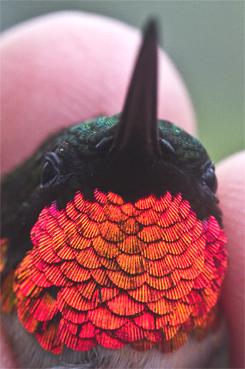
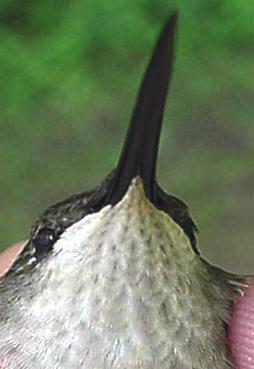
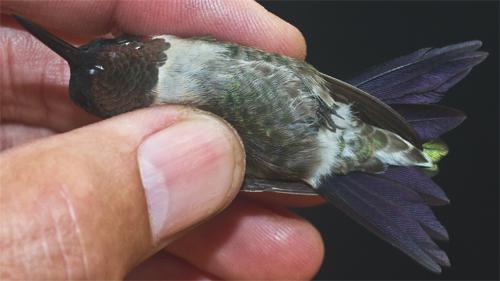

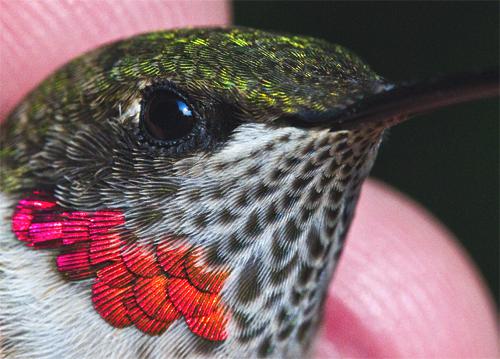
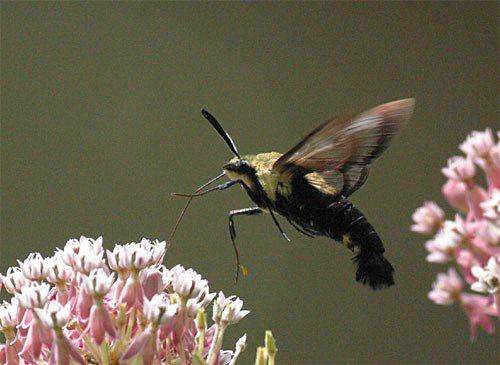
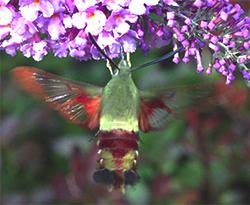 Hummingbird legs aren't adapted for walking, so unlike the fledgling robin a less-than-fully developed baby hummer on the ground would be completely helpless and unable to hover to feed on nectar or sugar water.
Hummingbird legs aren't adapted for walking, so unlike the fledgling robin a less-than-fully developed baby hummer on the ground would be completely helpless and unable to hover to feed on nectar or sugar water.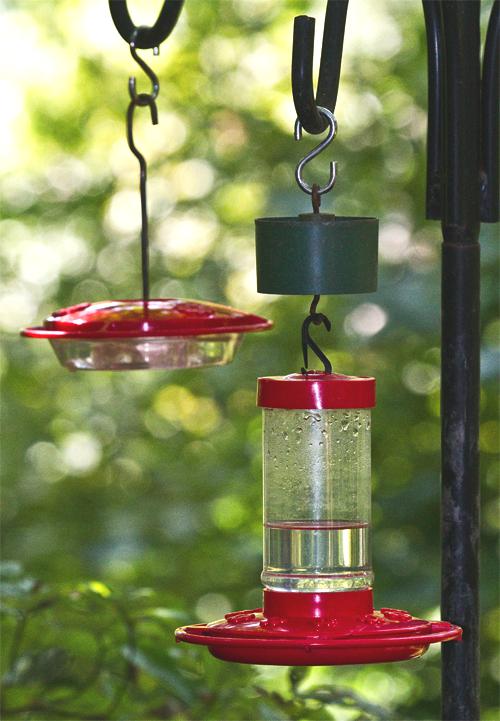
 4:1
4:1
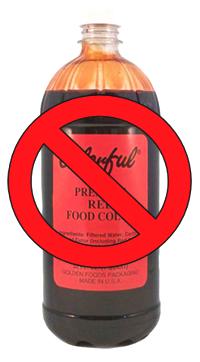 Don't let the feeder manufacturers or unscrupulous dealers fool you: There's no need to put vitamins or minerals or proteins or fats in the sugar water mix; hummers get all nutrients they need from tiny insects they also ingest. (As noted, some minerals such as iron may be toxic to hummers, and water softener salts may also be harmful. When in doubt use purified water.)
Don't let the feeder manufacturers or unscrupulous dealers fool you: There's no need to put vitamins or minerals or proteins or fats in the sugar water mix; hummers get all nutrients they need from tiny insects they also ingest. (As noted, some minerals such as iron may be toxic to hummers, and water softener salts may also be harmful. When in doubt use purified water.)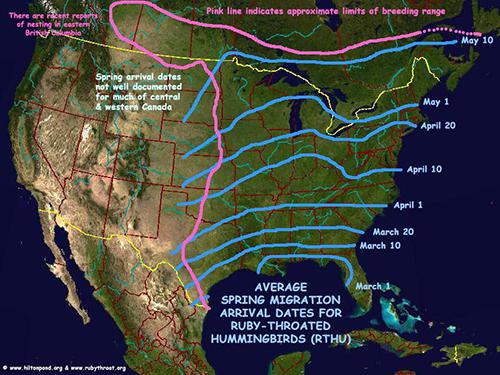
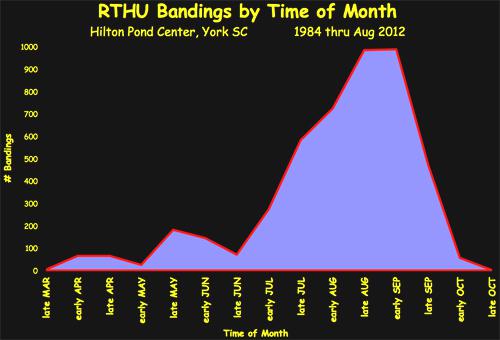

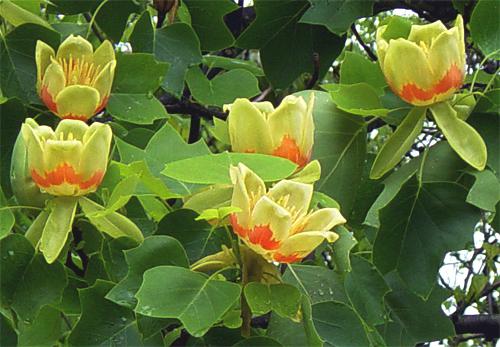
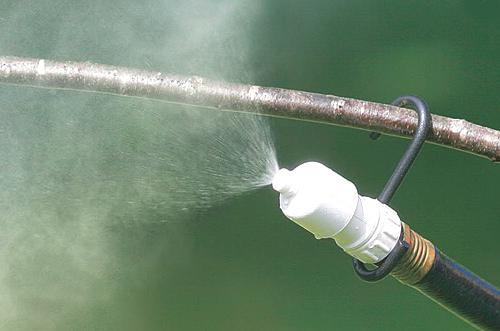



 Please report your sightings of
Please report your sightings of